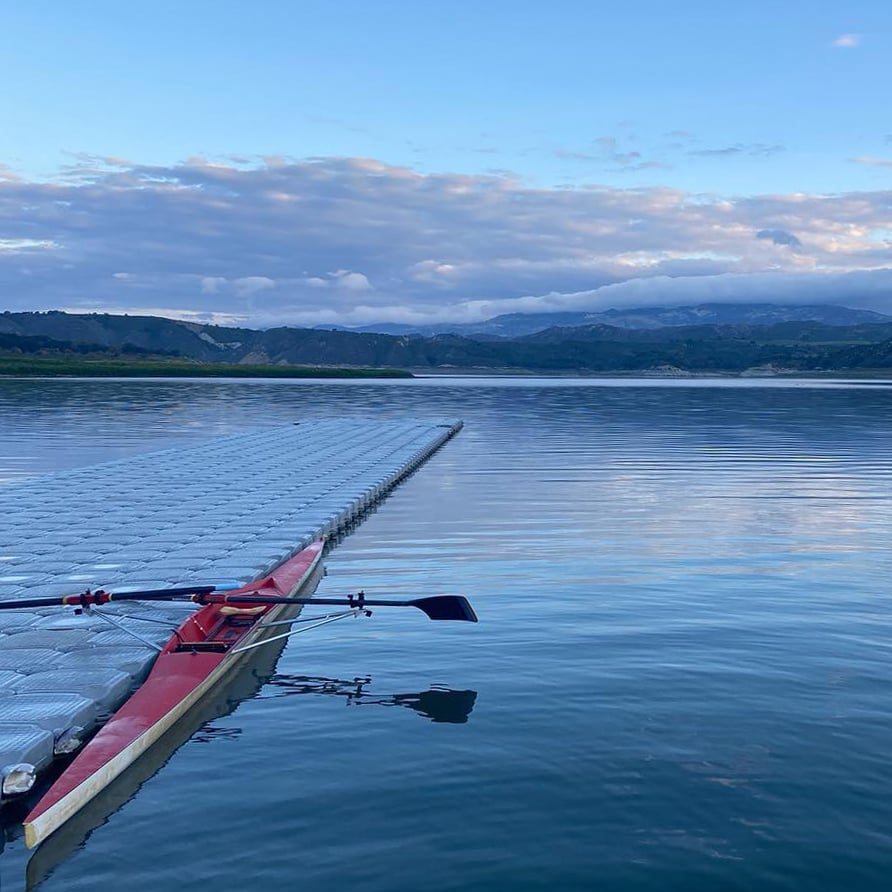What you need to know!

What to wear & bring
Wear tight-fitting pants or shorts and a workout style shirt are recommended as well as sneakers. Slip shoes are also recommended for use on the dock. Each seat in the boat has shoes already attached, so you’ll want to wear socks. High-visibility colors, especially shirts & hats, are appreciated. Other useful items include a hat or visor and sunscreen.
Athletes should also have plenty of water and we recommend bringing 2 water bottles. Containers that only require one hand to operate will be easier to use - it’s important to keep at least one hand on the oars at all times.
And, just in case, it’s recommended you bring a warm jacket and a towel and a change of clothes to keep in your car.
What to expect
After progressing to the on-the-water portion of the learn to row class, participants receive instruction in rowing shells that vary in size from a single boat to a quad (four-person) or maybe an oct (eight-person)
Rowing is a very physical sport, and you will be expected to have at least a basic level of physical fitness, flexibility, and strength to start. If you have any injuries or questions about your abilities, you should consult with your physician before starting a program. If you have any reservations before beginning a Learn-to-Row class, be sure to discuss them with the program director or coach. They are there to help and to make sure everyone enjoys the sport in a safe and friendly environment.
What is a typical practice like?
Every day, athletes gather by the boats and the coach gives the daily practice plan and lineups. Athletes then walk their boats and oars down to the dock. Once the boats are on the water, athletes will warm up with some technical drills and then complete that day’s workout. At the end of practice, the boats and oars are all brought back to the yard. When everything is put away, the groups meet to discuss the practice.
What’s after Learn-to-Row?
Do I have to pay for parking?
Yes. The park requires $10/diem or an annual Santa Barbara County Parks pass. The fee varies depending on residency, age and veteran status. This can be purchased at the gate house entrance.
Is rowing year-round?
Yes! Here on the Central Coast we have the privilege of beautiful weather all year round. Even in the winter, we are able to row. In these off-season months however, we are more likely to use the rowing machine and cross train. As long as it is safe to row, we will row!
How do I get started?
Sign up for one of our scheduled community weekends, our Learn to Row course, or private/semi private lessons.
What makes your program different?
We are Santa Barbara County's only community rowing option. As such we are committed to building a program which embraces all ages, skill levels, and goals for participation in the sport. Our current head coach has over 20 years of rowing experience and 10 years of coaching experience of all levels - 6th grade boys and girls to Division I women's rowing to recreational masters. Rowing can be intimidating! Her goal is to make rowing accessible and enjoyable to everyone no matter where they are in their life journey.
What are the prerequisites needed to sign up?
Knowing how to swim is a requirement of the sport. While ending up in the water is rare, we require all athletes to be able to tread water and get themselves back to the boat if they do end up in the water. The other requirement is to be able to carry 20-30 pounds over short distances. We carry our oars and boats to and from the dock every day.